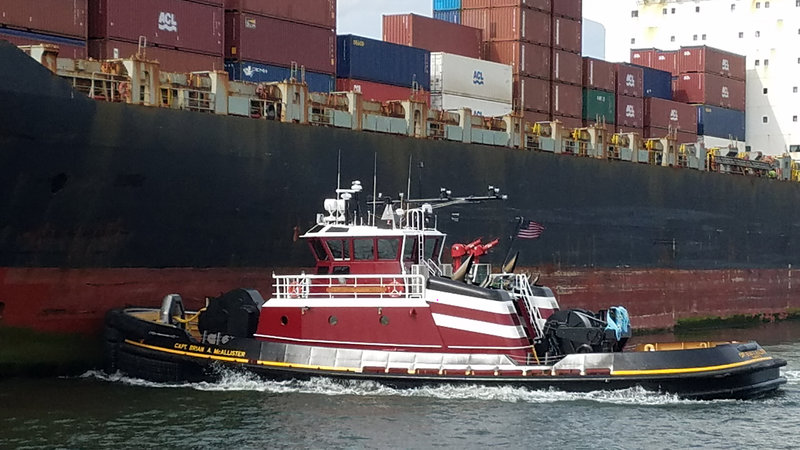The shipdocking scenario I described in my previous blog, and the equipment used to accomplish the long-distance deployment of the mooring lines, is a rare sight in most places that seafarers operate, especially the U.S.
That’s because the use of the bolo has been deemed too inherently dangerous to survive into the “modern” era, which has become progressively more and more risk-averse. The bolo has been largely phased out and replaced with more benign technology like the now-ubiquitous orange plastic ball.
A proper bolo is an old-school apparatus comprised of a length of genuine 550 cord (shotline, paracord or Type III parachute cord) with a weighted end and a wooden toggle. This permits it to get up the momentum and the mariner to control and throw it for distance. The weighted end was traditionally a small rectangular leather pouch filled with lead shot and a brass grommet on one end, to which the cord is attached. Real mil-spec paracord is very strong, but it’s small-diameter nylon line (about 4mm, or 5/32") with a nominal breaking strength of 550 lbs.
The qualities of this apparatus create a supremely effective means of getting a line to shore, particularly in very high winds and/or over long distances. In short, a bolo performs where even a similarly prohibited monkey’s fist won’t cut it.
In the right hands a bolo can sail like a guided missile. But like any tool it follows what I call the “4x2 rule.” The rule says that the more a tool can do for you, the more it can also do to you or others. There is no free lunch. The tool requires real skill and good judgment. Or you can just use the orange plastic ball.
But suppose you have problems maneuvering in bad conditions or have a sudden steering failure and/or loss of propulsion on short final? Or, what if your assist tug breaks down? What if you just need to get your lines out? Do you want the outcome to depend on the orange plastic ball?





